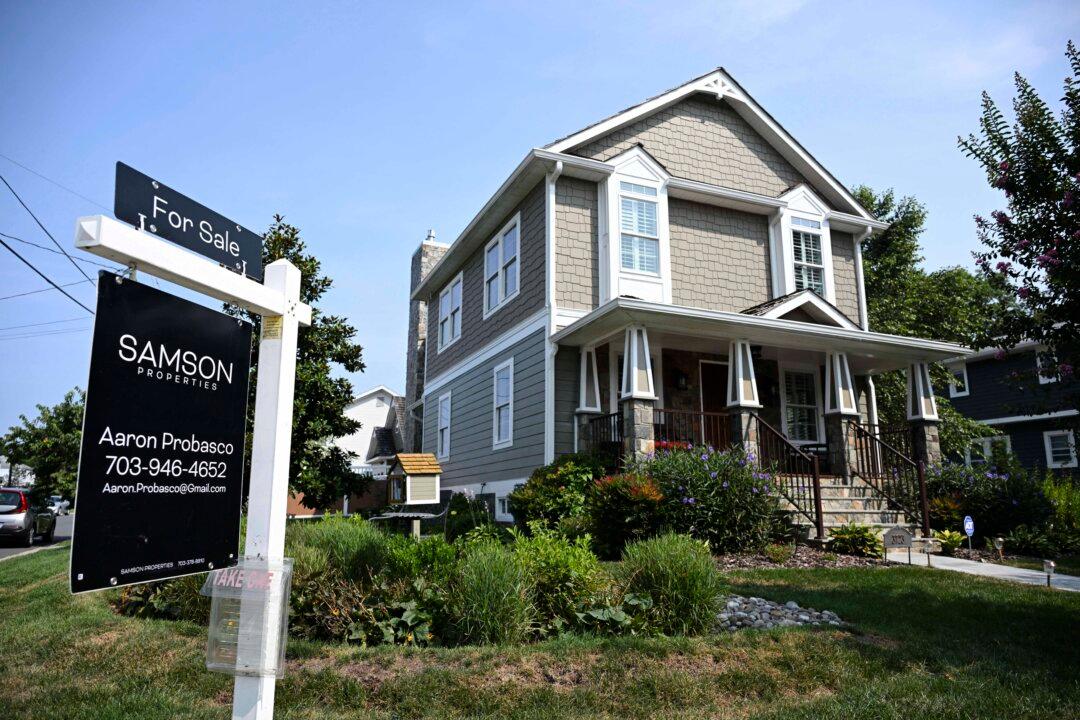Mortgage applications rose sharply last week to a two-year high, driven by a substantial increase in refinance activity as more homeowners sought to take advantage of declining mortgage rates.
The Mortgage Bankers Association’s (MBA) weekly applications survey, released on Sept. 25, showed an 11 percent overall increase in mortgage applications for the week of Sept. 20 from the previous week, buoyed by a notable 20 percent jump in refinance applications.
The increase sent mortgage applications to their highest level since July 2022. Joel Kan, MBA’s vice president and deputy chief economist, attributes the spike to declining mortgage rates.
“The 30-year fixed rate decreased for the eighth straight week, to 6.13 percent, while the FHA [Federal Housing Administration] rate decreased to 5.99 percent, breaking the psychologically important 6 percent level,” Kan said in a statement. “As a result of lower rates, week-over-week gains for both conventional and government refinance applications increased sharply.”
In mid-September, the Federal Reserve delivered a jumbo rate cut of 50 basis points and signaled more easing to come, which likely triggered the recent wave of refinancing activity.
The refinance share of mortgage applications jumped to 55.7 percent, compared with 51.2 percent the previous week.
“While the level of refinance activity is still modest compared to prior refi waves, they now account for the majority of applications, given the seasonal slowdown in purchase activity,” Kan said.
Purchase applications posted more modest growth for the week ended Sept. 20, with the MBA’s purchase index inching up a seasonally adjusted 1 percent from the previous week. On an unadjusted basis, purchase applications rose 0.4 percent.
The increase in mortgage applications coincides with mixed signals from the housing market. New home sales fell 4.7 percent in August, to a seasonally adjusted 716,000 units, according to data published on Sept. 25 by the U.S. Census Bureau. Similarly, existing-home sales fell 2.5 percent in August, according to a recent report by the National Association of Realtors (NAR).
“Home sales were disappointing again in August, but the recent development of lower mortgage rates coupled with increasing inventory is a powerful combination that will provide the environment for sales to move higher in future months,” Lawrence Yun, the NAR’s chief economist, said in a statement.
Refinance applications particularly have benefited from lower mortgage rates, which started falling in May, roughly in line with decreasing yields on the 10-year U.S. Treasury note as market expectations grew in recent months for the Federal Reserve to cut interest rates.
Some economists have cautioned that the prospect of further drops in mortgage rates could lead potential buyers to put off buying a home. This dynamic could create short-term fluctuations in home sales, even as the long-term outlook remains broadly positive.
“The immediate impact of the near-promise of lower rates to come is that anyone who can postpone a home purchase probably will [in order] to realize even lower mortgage rates six or 12 months from now,” said Carl Weinberg, chief economist at High Frequency Economics. “Recovery of the sector from the recent years of Fed tightening will take a while.”
Still, economists generally expect mortgage rates to remain a key factor in supporting housing demand. With mortgage rates at their lowest in more than a year and home-loan sizes at historic highs—the average loan size hit $413,100 last week—the housing market appears poised to benefit from improving affordability.
“We expect lower mortgage rates, pent-up demand, and a still relatively scarce supply of existing homes, despite some recent increases to support modest growth in new home sales over the balance of 2024 and into 2025,” said Nancy Vanden Houten, lead U.S. economist at Oxford Economics.







